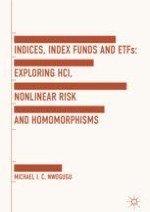2018 | OriginalPaper | Buchkapitel
6. Informationless Trading and Biases in Performance Measurement: Inefficiency of the Sharpe Ratio, Treynor Ratio, Jensen’s Alpha, the Information Ratio and DEA-Based Performance Measures and Related Measures
verfasst von : Michael I. C. Nwogugu
Erschienen in: Indices, Index Funds And ETFs
Verlag: Palgrave Macmillan UK
Aktivieren Sie unsere intelligente Suche, um passende Fachinhalte oder Patente zu finden.
Wählen Sie Textabschnitte aus um mit Künstlicher Intelligenz passenden Patente zu finden. powered by
Markieren Sie Textabschnitte, um KI-gestützt weitere passende Inhalte zu finden. powered by
